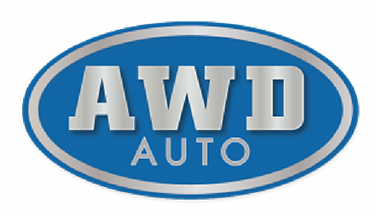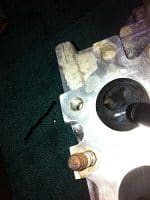Here is a Quick Video I took today at the shop demonstrating what is known as “dropped” exhaust valve guides. The vehicle is a 2000 Subaru Outback with the SOHC Subaru Engine. Once I have more time I will take some better pictures.
This was a very common thing to happen to the Legacy 2.2l from 1996 to 1998 with Single port exhaust but we have seen it more and more on the 2.5l engines, but I will add, typically only on the ones that are not taken very well care of.
What typically occurs is carbon and sludge developing on the stem of the valve and the inside of the guide. This causes first the valve to want to stick or hang up in the guide and then under the right conditions as the aluminum head has expanded from heat away from the steel guide the guide will shift a bit, at first and once it has moved will continue to do so until it actually causes a cylinder misfire.
This can be avoided with good maintenance normal oil changes, and no every 7000 miles isn’t good maintenance unless you like expensive repairs later. I also suggest a fuel induction service every 60k as good preventative maintenance as well. The carbon buildup that I try to point out is after we had already cleaned the heads in a parts washer. Using good fuel, not ignoring a check engine light are all forms of good maintenance.
Justin


Recently bought a 2001 outback with a busted block where a rod went haywire and just realized that one of the guides is out maybe 1/2 inch. Can it be successfully reinserted or do I need a new guide or a different head?
Thanks
You would need to install an Oversized guide to make it a good repair.
-Justin
Justin,
Thanks all your answers over the years…
I’ve got a 2001 Legacy L and was wondering how to do the fuel induction service myself. Mainly, I was trying to find out how and where to use the SOA868V9430 tool to inject the top engine cleaner into the engine.
Thanks,
Kirk
Hi Kirk,
So we like most dealers use the BG tool and not the SOA one, but the cleaner tool you asked about is designed to be used in a manifold Vacuum port to perform an induction type service, you would “t” into a manifold vacuum port on the intake manifold.
The BG tool is actually a much better idea when performing an induction service as it uses a controlled mist to decarbonize through the actual throttle plates, which is a central location VS a vacuum port which is not and during an induction service the vacuum can become unstable reducing its effectiveness. You can use thew SOA tool, just really need to be careful to regulate the cleaner properly.
Hope this helps.
-Justin
Yes, that helps. Thanks. I think the 3M intake system cleaner works similar to the BG in that it is injected prior to the throttle body.
Thanks again,
Kirk
what should I expect this to cost(machining new guides in)?
I have no idea what the rate is locally to you, your energy and mine would be better spent if you looked to shops local to you for a price.
-Justin
That all may be so but I have the same thing but its just one cylinder the other 3 are fine plus I always get my oil changed at 5K and I do almost all highway miles,108K, so I got to believe this is a manufacturer defect and a poor design; I looked up the cylinder port and there is no sludge or carbon that I could see. And what is good gas? Nothing in the owners manual about using anything but regular 87octan unleaded.
Joe,
What I have laid out are ways to potentially avoid the issue, kind of like taking vitamins is good for you, doesn’t mean you wont get sick but some may benefit from the advice.
In America we have been led to believe that 87 octane fuel is okay, rest of the world not so much and this can lead to lots of issues with the internal combustion engine.
So the design is the same for every SOHC 2.5l and only a fraction ever develop the issue, I am sorry that it has happened to you but here we are.
I suggest Oil changes every 3000 miles and mid grade fuel, we can’t go back and walk the path not chosen and its possible it happens anyways, but its also possible it doesn’t.
The sludge wouldn’t be seen until the heads are removed and disassembled by the way
-Justin
I have a friend with a 2008 outback with just 46k miles that this happened to. He maintains his car well. Is it the lack of long distance commute that would heat up his engine that would cause a similar carbon buildup?
Improper warm up cycles, or lack there of do contribute to more repairs.
Justin
Hi Justin thanks for the link. What is “the right type of fuel”?
John